Discovering how to measure hat size accurately is quick and stress-free.
Finding the perfect hat is only half the battle. No special tools or skills are needed, just follow our easy guide for a great fit every time.
We ensure you can accurately measure your hat size with items you’re likely to have on hand. We ensure comfort and style in your headwear.
Let's measure it!
Key Takeaways
-
Accurate head measurement is crucial for finding the right hat size. It varies depending on style and brand; materials and head shape also significantly affect hat fit.
-
Hat size charts help convert head measurements into the correct hat sizes. They must consider gender-specific sizes and children’s sizes, which correspond to their age.
-
Adjusting the fit of a hat is possible using sizing tape or inner drawstrings. For selecting the right hat style depends on an individual’s face shape.
The Importance of Hat Sizing
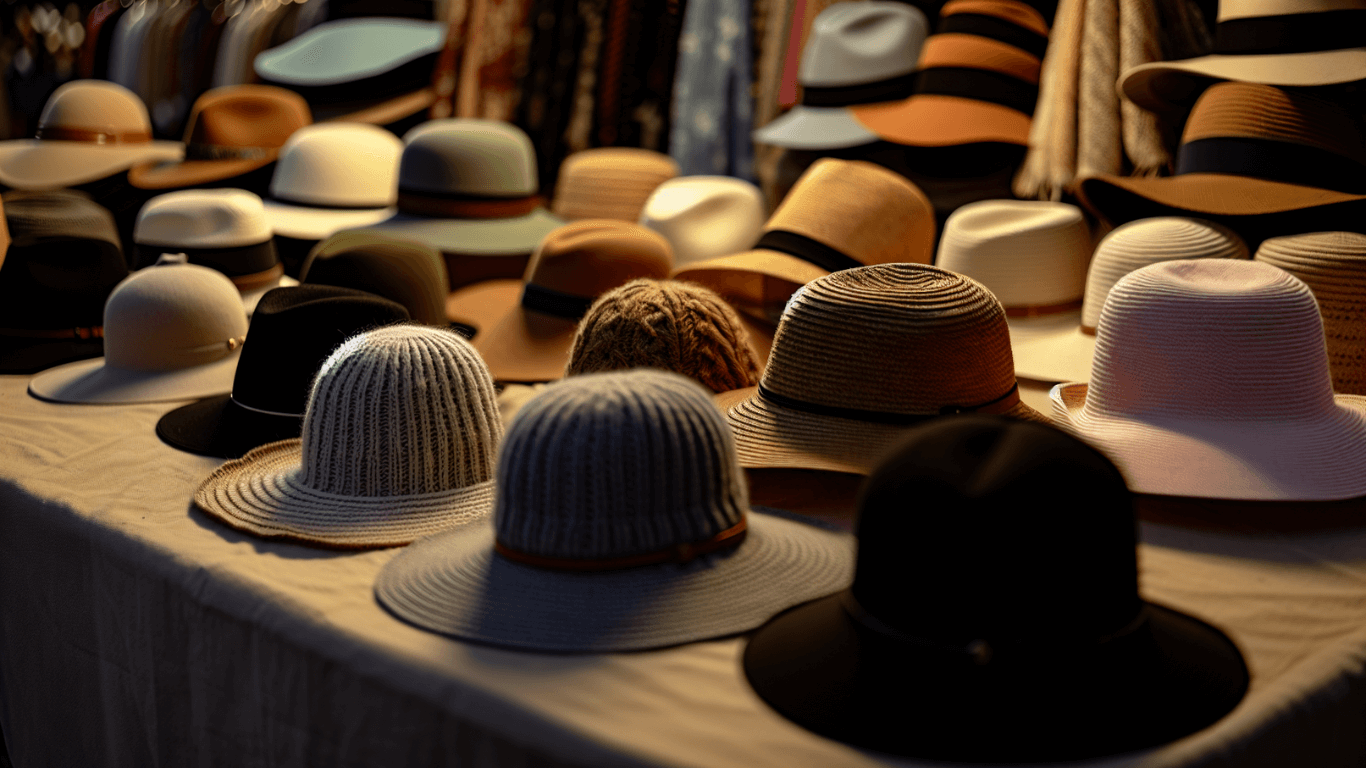
When it comes to finding the right hat size, it’s not just about getting a good fit. It’s also important for your confidence, style, and comfort.
Can you picture yourself walking into a room with your hat fitting perfectly?
Not only does this enhance your features, but it also complements your outfit. Talk about making a strong statement!
The first step in this journey is measuring accurately. Remember that different types of hats may require different levels of snugness (such as floppy hats). This means that sizes can vary depending on the specific style.
If you have trouble finding the perfect fit due to larger head sizes or discrepancies between manufacturers’ sizing systems, don’t hesitate to contact the hat company or refer to their size chart for guidance.
Check out Eric Javits "Hat Sizing Guide".
If still unsure, opt for going up one size rather than risking an uncomfortably tight hat after the battle is won by having both great fitting AND stylish design when selecting ideal top gear.
So remember: precise measurement plays an equally significant part alongside choosing a suitable look while determining proper dimensions according to desired use/outfit considerations.
Factors Affecting Hat Fit
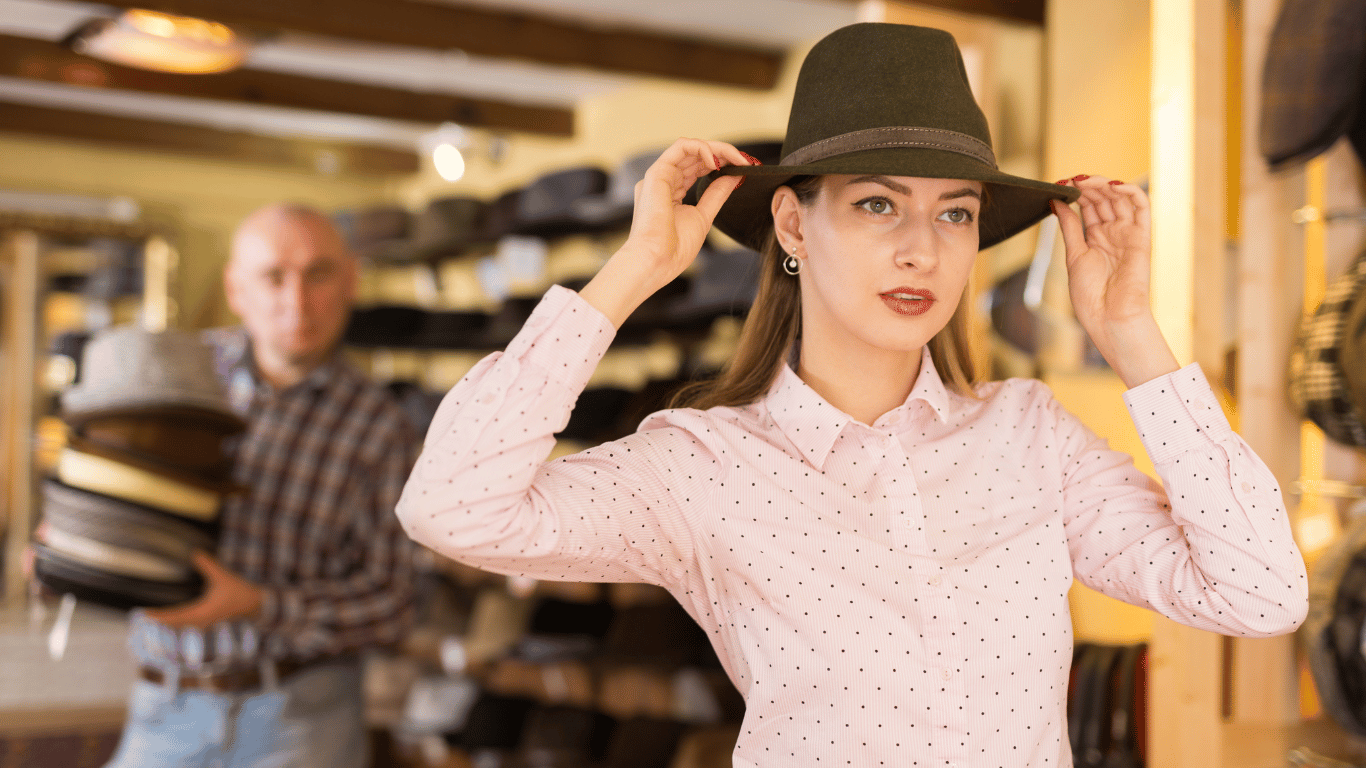
The material of a hat has a significant impact on its size. For example, polyester hats will maintain their shape and provide a consistent fit, while cotton and acrylic hats have more stretch to accommodate various head sizes comfortably.
It’s important to note that the brand of the hat can also affect its size - what may be labeled as 7 3/4 in one brand could differ from another due to slight differences in measurement systems.
Regarding material and brand, other factors such as hairstyle should also be considered when selecting the right-sized hat. Voluminous or styled hair may require extra space within the hat for proper fit.
Additionally, sweatband materials are essential; cloth sweatbands offer flexibility, while leather ones provide a firmer fit.
Finding a sweatband that allows for snugness without being too tight around your head is the key.
The Role of Head Shape

Moving on to the shape of your head, it plays a significant role in how hats fit and look on you.
Are you someone with an oval, round, square, or heart-shaped face? Each head shape requires a different style of hat for the best fit.
We have some recommendations if you’re curious about what types of hats suit certain head shapes. For example, if your face is round, fedoras or baseball caps can enhance asymmetrical features.
Heart-shaped faces can try out cloches, beanies, or fedoras for an appealing appearance. Square-faced individuals may benefit from rounded-brimmed hats that soften their facial features.
On the other hand, those who possess an oval-shaped head are lucky because they can easily pull off various styles, such as sunhats and wide-brimmed ones like Fedoras, without any hassle!
In contrast to this group’s luck, there are people with long faces. Do not worry because there are still options suitable for them too – baker boy hats are among deeper-fitting styles like berets, cloches, and caps idealizing longer heads.
Measuring Your Head: Step-by-Step Guide

Ready to determine your hat size? Grab a tape measure and let’s begin!
Use a flexible measuring tool such as cloth or bendable plastic for accurate results.
Follow these steps for measuring your head:
-
Wrap the tape around the largest part of your head.
-
Bring both ends together at the center of your forehead above your eyebrows.
-
This point is typically where hats sit perfectly, just above the ears and across from eyebrow to eyebrow.
But what if you don’t have a tape measure on hand? No need to worry!
A string can be used in its place with equal effectiveness. Wrap it around your head, mark where it overlaps, then measure its length using a ruler.
This will give you an accurate measurement of our head circumference- crucial information when finding the perfect fit for any type or brand of hat.
Be aware that sizing may vary between brands and styles, so relying on actual measurements is the most reliable method for getting a hat that fits properly. Look for the location designed to secure properly instead of labels because they can differ depending on design features. It will ensure you find the right fit easily if done correctly.
After all, accurate measurement is essential to discovering a clothing piece perfectly tailored to your specifications. Trust your numbers instead of following predetermined labels, and you’ll be assured of gaining a fit to your head precisely.
Use verifiable methods found in today’s marketplace as they provide the correct accuracy needed. It all starts by following the proper steps when selecting the choice of options eventually decides upon.
Using a Tape Measure

When measuring your head for a hat, take a tape measure and place it across the middle of your forehead, slightly above your eyebrows.
Make sure to wrap it over your ears and the back of your head, just above the neck. As you do this step, be careful not to pull too tightly on the tape so that it remains level and firm.
To ensure accurate measurements when using a soft measuring tape:
-
Use multiple attempts to get an exact measurement.
-
Adjust or alter where needed for proper fitting.
-
When wearing hats make certain they feel snug but not constrictive. There should be no pressure felt at all during wear.
The key is maintaining consistency with how firmly you hold down or against whichever spot will serve as placement purpose while holding positioning likewise keeping tension levels equal (neither pulling too much nor allowing slack) throughout circumference area wrapping.
Using String and Ruler
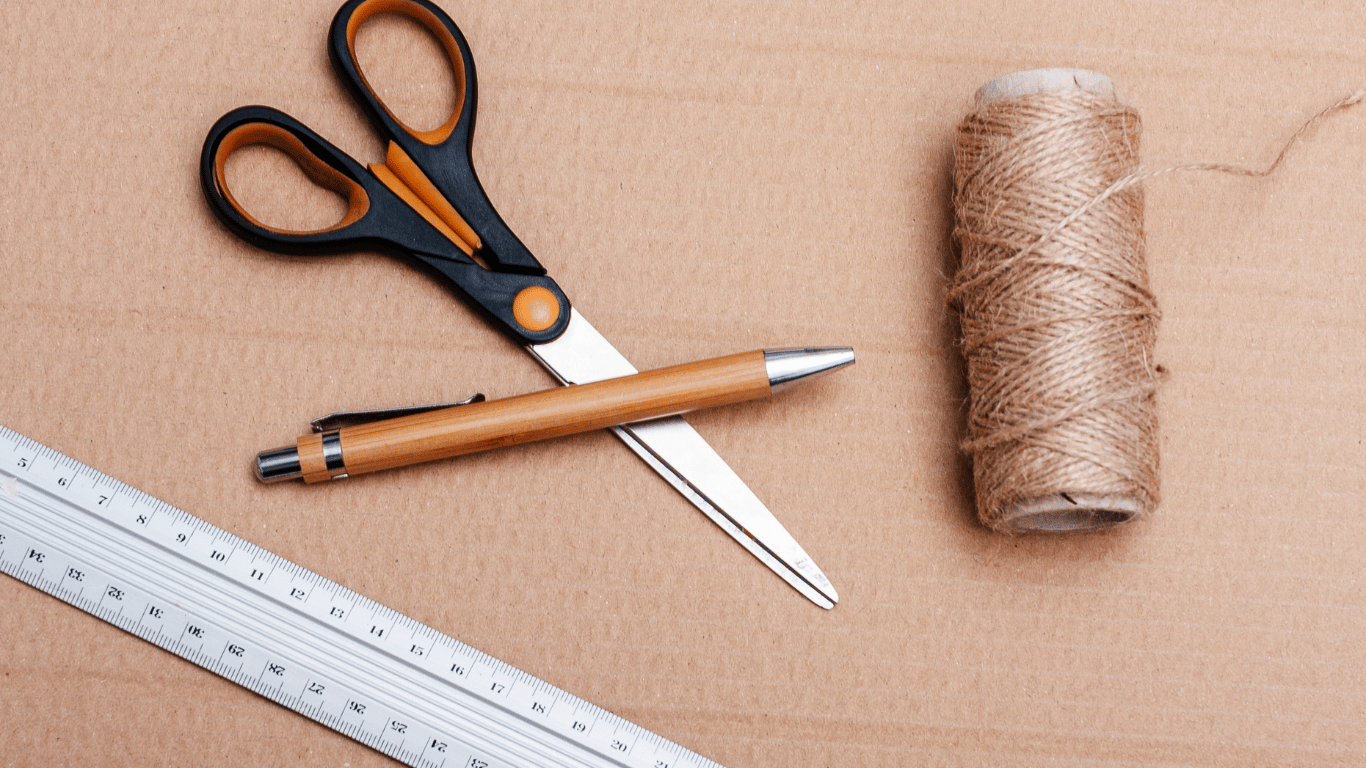
Without a tape measure, one can use a string and ruler to determine hat size accurately. The suggested length for the string is at least 25 inches.
To properly position it, wrap the string around your head from behind and bring both ends together at the center of your forehead, slightly above where your ears are located - this imitates where a hat’s brim would rest on top.
To ensure precise measurements follow these steps:
-
Make sure that when you wrap the string around your head it is not too tight or loose.
-
Mark down where both ends meet.
-
Use a ruler to measure from end to end until reaching this marked point.
-
This final measurement will represent your head circumference, which can then be compared with an appropriate chart according to the sizes available in hats.
Lastly, after determining accurate dimensions using simple tools such as strings and rulers instead of traditional tape measures.
Make sure to consult fitting charts brands provide before choosing any desired new-hat purchase - matching specifically intended wearer characteristics (e.g., age/gender), with their correct corresponding optimal size accordingly informed-best-fit options wisely chosen.
Understanding Hat Size Charts
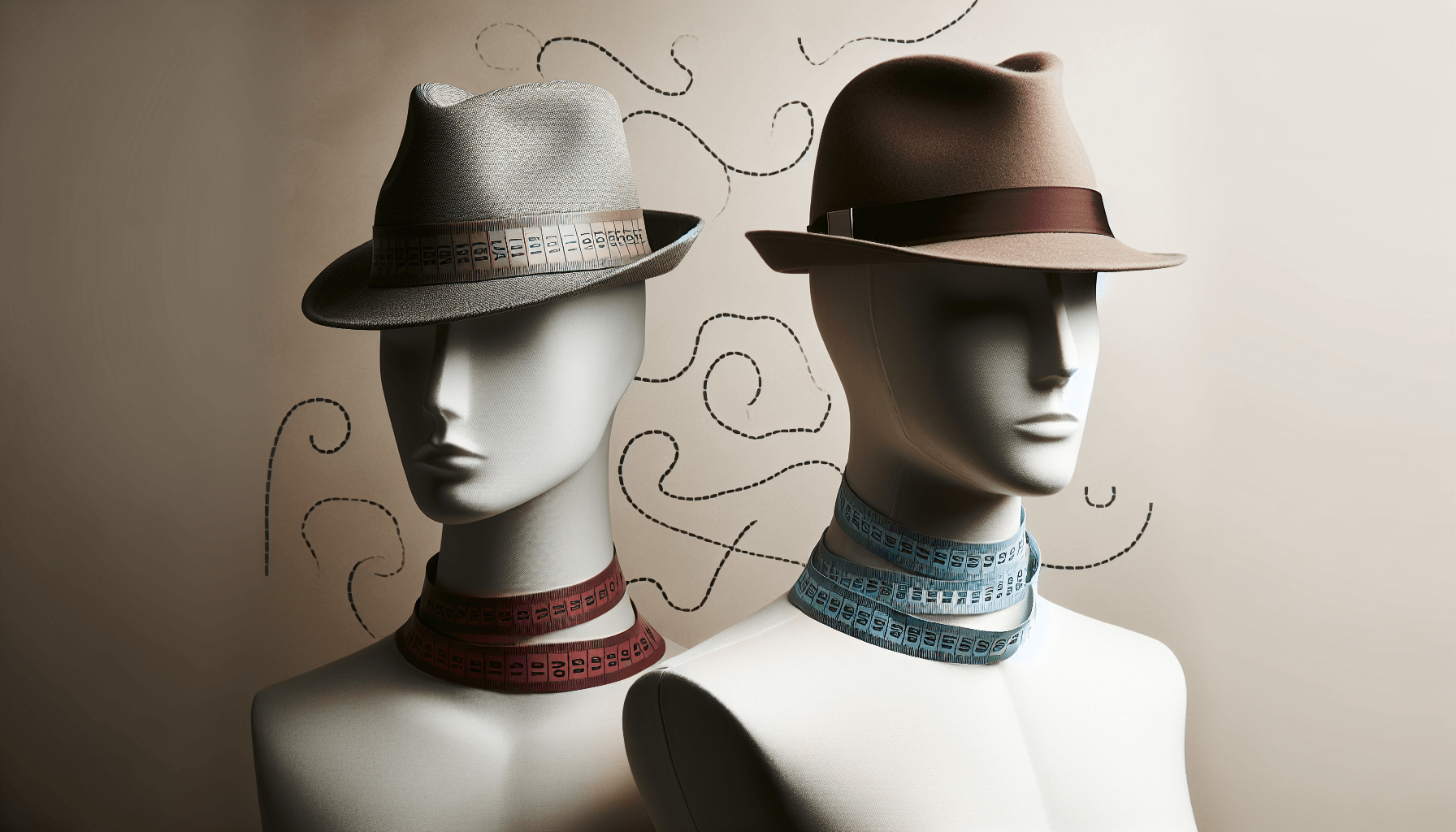
Once you have measured your head, the next step is to consult a hat-size chart. Hat sizes are divided into numerical sizing (measured in inches or centimeters) and alpha sizing (represented by letters such as S, M, L, XL).
After determining your head measurement, use a hat size chart to determine which category you fall under. For example, if your head measures 23 inches according to the universal chart used for reference purposes globally, then an appropriate fit would be large with a fitted range of 7 1/4 - 7/3.
Remember that men’s and women’s hat sizes differ on average. The typical hat size for men is around 59 cm while it averages about 57 cm for women.
Do not worry if you come across hats labeled “one-size-fits-most”. Many of these hats come equipped with adjustable bands or drawstrings to provide the perfect fit no matter what.
Men's vs Women's Hat Sizes

Although there are universal hat sizing charts, the sizes for men's and women’s hats tend to differ. Typically, women’s hats can fit head circumferences ranging from 21 1/2 inches to 22 1/4 inches while the standard size for men is approximately 59 centimeters.
In cases where your specific hat size cannot be found, it may be helpful to search for a hat with an adjustable band or drawstring that allows modification.
Exploring different styles and brands of hats might also be useful as they may offer a better-fit option.
Kids' Hat Sizes

Are you in search of hats for kids?
Their age can determine the size of a child’s hat. For example, children between 1 and 2 years old typically wear sizes ranging from 48 to 51 cm while those aged 3 to 7 usually wear sizes between 52 and 55 cm.
Like adults, measuring a child’s head to ensure proper fitting accurately is important. The process remains the same: use either a tape measure or a piece of fabric and wrap it around the head just above the ears.
Ensure some room for comfort, but snug enough not to fall off easily.
Tips for Finding the Perfect Hat Fit
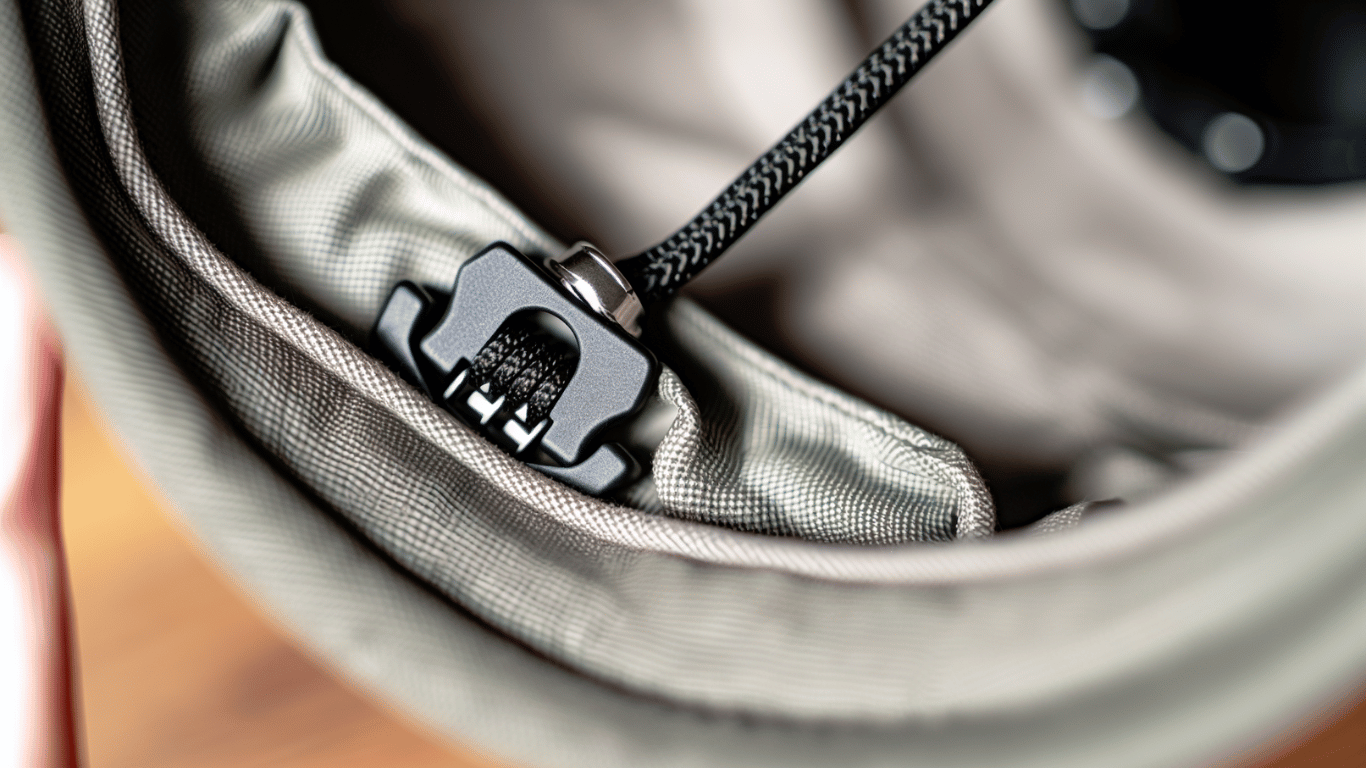
After taking measurements of your head and using size charts to determine the perfect hat, it’s important to ensure it fits just right. If your new hat feels too loose or big, there are a few ways to adjust its size.
If your chosen hat does not have an inner drawstring for sizing adjustments, don’t worry. You can still modify the fit by using hat-sizing tape.
Place a piece of this tape underneath the sweatband at either the front, back, or side of the hat to help mold it to your head shape and achieve a personalized fit.
If you cannot find exactly in-between sizes for hats, you may choose slightly larger ones as these can also be adjusted with some alterations made afterward to ultimately give better comfort on wearing them later!
Adjusting Hats with Inner Drawstrings
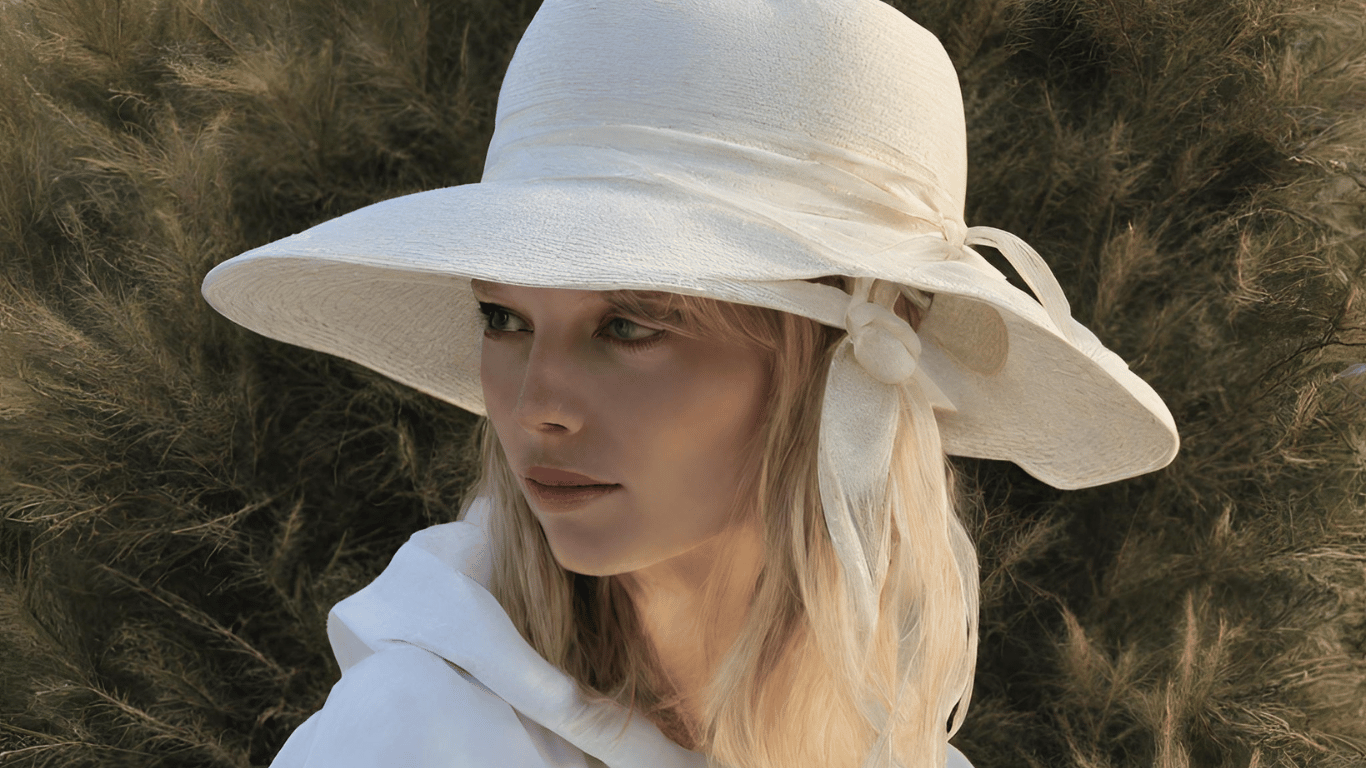
Having inner drawstrings on your straw hats is a great added feature. These useful strings are typically woven through small openings in the ribbon inside of the hat, allowing you to adjust it for a custom fit.
To ensure that your hat fits perfectly based on your head size and hairstyle, simply tug gently on the drawstring within the hat. Once you have found your desired fit, tie a knot or bow to secure it, and ta-da!
Your versatile hat will now stay comfortably put no matter what style or event you wear it for.
Sizing Up or Down
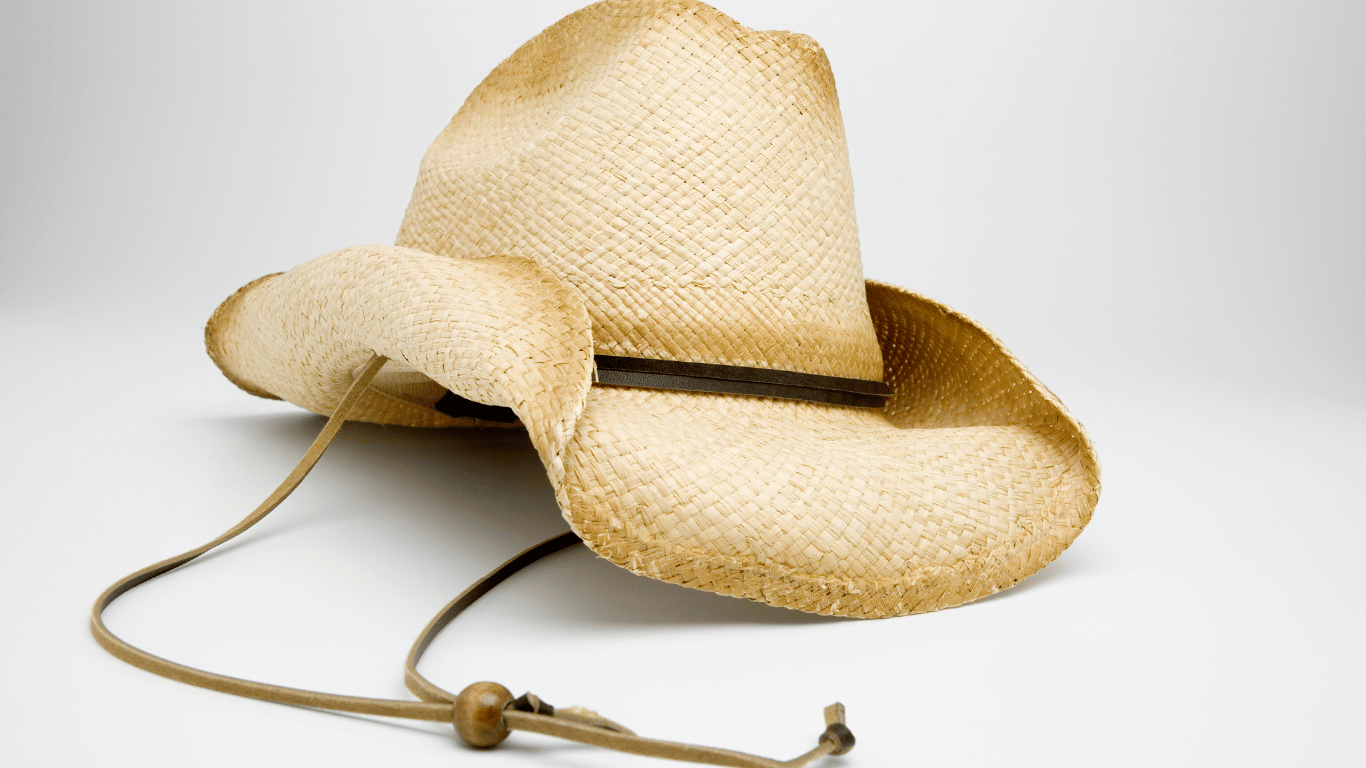
Finding the ideal hat fit is not always solely dependent on measurements. Sizing up involves choosing a larger hat size than your actual head measurement, providing increased comfort, and accommodating variations in head size or hairstyle for both style and comfort.
On the other hand, sizing down means opting for a smaller hat size, usually to achieve a looser fit that sits lower on your head. This traditional approach offers more comfort during prolonged wear periods.
It’s important to consider the hat's material when deciding whether to go up or down in size as it can significantly impact how well the hat fits.
Considering factors such as material is crucial when selecting your perfect-fitting hat.
Selecting Hat Styles Based on Face Shape
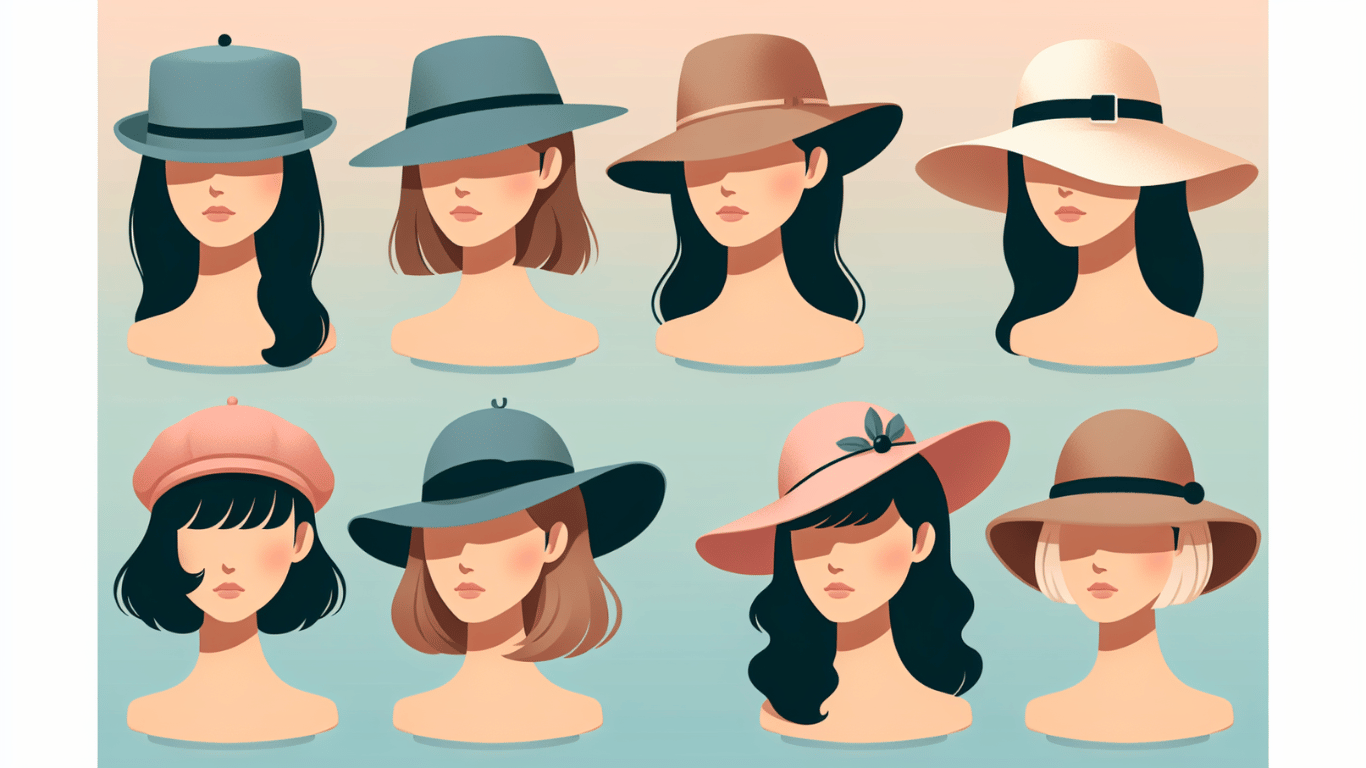
Individuals with different face shapes can wear every type of hat. Selecting a suitable hat style for your specific face shape can accentuate and enhance the appearance of your facial features.
Unsure which hat style would flatter you?
Here is a brief guide:
-
Baseball, cloche, berets, wide-brim, and fedora hats are recommended for those with round faces.
If you have a square-shaped face, then baseball caps and flat-topped styles such as boater or fedora hats will work best to complement it.
Remember that not all types of headwear suit every person equally. Choosing the right kind depends on one’s unique combination of physical attributes - especially their hairline.
Structure around eyes, besides personal preferences. Since everyone has individual characteristic traits, everyone has individual characteristics. We’ve put together these tips based on people’s particular facial layouts in relation to accessories like this.
Caps, boaters, and others.
Round Faces
Congratulations if you have a round face!
Your facial features include softer angles, slightly curved sides, a rounded chin, and prominent cheekbones. To enhance your appearance, opt for hat styles like wide-brimmed hats or fuller-shaped caps which can create an illusion of length.
For those with round faces, wide-brimmed hats are ideal as they provide more angularity to the overall look. On the other hand, wearing fuller-shaped caps can draw attention upwards and give the appearance of a longer face shape.
Consider choosing tapered crowns or asymmetrically designed caps to balance out the symmetry in your facial structure.
Square Faces
Square-shaped faces are known for having equal width and height, a defined jawline, squared corners on the forehead, and a horizontal hairline. Square-faced individuals need not worry as there is still a perfect hat for them!
Wide-brimmed hats work well with this face shape because their rounded brims help to soften the angles of strong features.
For those with square faces looking to enhance their appearance even more. When wearing hats, opting for fuller-shaped caps that balance out angular facial structures is best.
Remember that choosing the right structure for your hat is important in how flattering it looks on a square face. Therefore, it’s crucial to carefully select your headwear accordingly!
In summary, hats play an essential role in complementing various face shapes and they certainly have something special planned specifically for them.
Shopping for the Perfect Hat
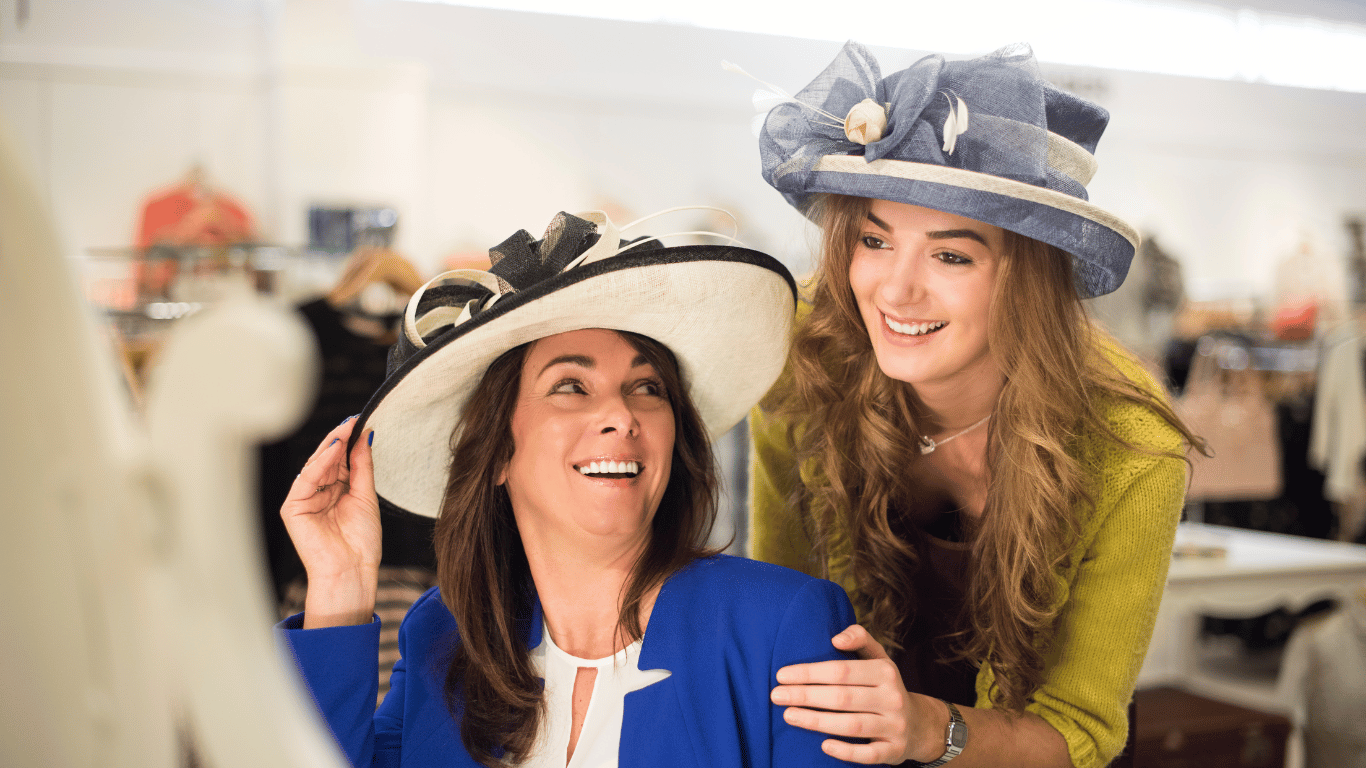
With this information in mind, you are now prepared to go shopping!
Whether your preference is online or in-store, it’s important to consider a few things while hunting for that perfect straw hat.
Although browsing hats online offers convenience and a wide selection of styles, understanding the return policy of each retailer is key.
The assurance that you can exchange or return any unsatisfactory hats provides peace of mind when making your purchase decision.
Online Shopping Tips

When shopping online, sizing charts are valuable for customers looking to find their ideal hat size. These charts use head measurements to determine the correct hat size and can be especially helpful when deciding between sizes.
When uncertain about which size to choose, it is recommended to select the larger option.
To accurately measure your head’s circumference to determine the correct hat size while browsing online, wrap a tape measure from behind your head towards your forehead just above your eyebrows.
Then compare this measurement with the provided chart on your website.
In-Store Shopping Tips

Don't be afraid to ask for assistance for those who prefer shopping for hats in physical stores!
The store employees can provide individualized help by measuring your head size, suggesting different hat styles and fit that may suit you, and offering useful advice on adjusting and wearing the hat comfortably.
When trying out different hats in-store, feel free to experiment with various shapes and designs until you find the one that complements you best and boosts your confidence.
Keep in mind that a perfect hat should not only look good but also fit comfortably on your head.
Summary
When it comes to hats, size is crucial. Discovering the right hat size involves understanding its importance and the factors affecting how it fits. Measuring your head accurately and using a hat-sizing chart are essential skills in this process.
With the perfect size hat, you can showcase your unique style with confidence as if you were wearing an extension of yourself on your head. So don’t hesitate to find that ideal fit. After all, in the world of hats, we’re just living under their fashion reign!
And consider the renowned brand Eric Javits regarding quality and style. Known for our craftsmanship and fashionable designs, Eric Javits' hats perfectly blend comfort and style.
So, step up your hat game with Eric Javits and experience the difference of wearing a hat that truly fits and complements your style.
Shop our wide option of hats today!
FAQs
What hat size is 57cm?
A head circumference of 57cm is typically considered a medium in hat sizing. In numerical sizing, it would be approximately a size 7 1/8 in the US or a size 7 in the UK.
However, it's always a good idea to check the specific sizing chart of the hat brand you're interested in, as sizes can vary slightly between different manufacturers.
What hat size is a 23-inch head?
A 23-inch head is equivalent to a large hat size, which falls within the fitted range of 7 1/4 to 7 3/8. If your head measures this circumference, you would require an average hat size in this category.
In other words, choosing hats labeled with these sizes will suit you.
How do you measure hat size in Australia?
Measuring hat size in Australia follows the same method as other countries. You must wrap a flexible tape measure around the widest part of your head, just above your eyebrows and ears. The measurement in centimeters is your hat size.
However, checking the specific sizing chart of the hat brand you're interested in is always recommended, as sizes can vary slightly between different manufacturers.
What factors should I consider when shopping for hats online?
When shopping for hats online, it is important to consider various factors such as the hat that will suit your face shape and personal fashion taste, the overall quality of the product, and which occasions you plan on wearing it.
It’s also crucial to familiarize yourself with the retailer's return policy before purchasing. This way, you can ensure that any potential issues or concerns regarding fit or style can be addressed efficiently.
What if I don't have a measuring tape?
Use a piece of string or ribbon to measure around your head, then lay it flat against a ruler or yardstick. Mark where the string overlaps and measure that length.
























